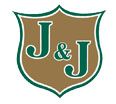Four drywood termite species can be found in most areas of Louisiana where they often infest structural wood, furniture, and residential trees. Drywood termites are quite devastating, as they cause hundreds of millions of dollars in control and damage repair costs in the southern states each year. The damage caused by drywood termites is understandably overshadowed by the catastrophic Formosan subterranean termite epidemic that is ongoing in all areas of Louisiana. Although subterranean termites are more destructive than drywood termites within homes, drywood termites are notorious for establishing infestations that are difficult to detect. Drywood termites may establish multiple colonies within a home’s structural wood, so if one infestation site is found within a home, there is no telling if there may be additional damaged areas nearby that are well concealed. While it is true that drywood termite infestations can be detected by the presence of “kickholes” in infested structural wood and fecal pellets on the floor within homes, this information may not be specific enough to be of any use to homeowners trying to avoid termite pest issues.
Subterranean termites collect water from the ground soil where they dwell, but drywood termite colonies are entirely contained within individual wood items, such as damp logs, dead trees, tree stumps, wood fences and, of course, structural wood. In order to remain hydrated, drywood termites extract water from the wood that they both consume and nest within. The species extracts water by using its internal muscles to squeeze the food their digesting into smaller forms that are expelled as oval-shaped pellets with six indentations along the rim, somewhat resembling a hexagon. These pellets are easy to identify as drywood termite feces if a homeowner knows what to look for. The kickholes that are visible on the surface of infested wood are circular and very small at 1mm in length and width. The condition, such as relative moisture, of drywood termite pellets can indicate how long an infestation has been active. Once a pair of winged termites (alates) establish a nesting site within a home’s cosmetic or structural wood, an infestation will likely become noticeable once the colony begins to produce reproductive alates, which takes at least 5 ½ years in infested homes.
Have you ever witnessed winged termites hovering around your outside lights?
Tags: Termite Control, Termites




